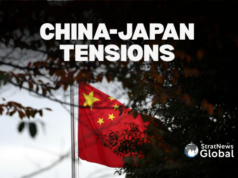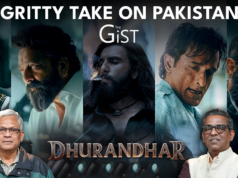NEW DELHI: Recent pro-monarchy rallies in Nepal give the impression that 15 years after the two-century old institution was abolished by the constituent assembly, there are now moves to bring it back. But that maybe reading too much, rather one has to wait and watch how this movement pans out, says Prithvi Shrestha, senior journalist at The Kathmandu Post.
Shrestha was on StratNews Global, answering questions on The Gist show whether the pro-monarchy rallies had a strong core. In his view, there were strong feelings among the people when the political parties began pushing secularism, overturning Nepal’s Hindu-dominated state symbolised by the king. But given the strong feelings against the monarchy, it was perhaps inevitable that as the institution was pushed out to turn Nepal into a federal democratic republic, the Hindu state would also go.
Shrestha notes that the pro-monarchy rallies do not mean there is a strong sentiment to restore it. In his view, there was nothing that the monarchy did which would have endeared it to the people. Rather it only reflects the view among common people that it may have been a shade better than the unstable politics and venal politicians of today.
Inevitiably, that means there is no electoral draw for the pro-monarchy parties like the Rashtria Prajatantra Party (RPP), says Shrestha. Whatever support they may enjoy has not translated into votes during elections. But yes, in terms of public sentiment that Nepal, a Hindu majority country, should return to its Hindu state origins, is evident and growing.
Some of the leading actors in leading the pro-monarchy rallies include the RPP, which had invited the former King Gyanendra to one of its events. Another is Durga Parsai, a businessman and medical entrepreneur with strong links to former prime minister KP Sharma Oli and current Prime Minister Prachanda.
Parsai’s motivations are probably linked to his business interests, says Shrestha, and his support for the monarchy suggests he hopes for better luck in that quarter. Or he could be sending a message to the current political establishment. Either way he is controversial and also popular on social media with his loud demands for waiving bank loans taken by low income families.
The role of former King Gyanendra is interesting. While he has taken part in religious functions (including a much-publicised visit to shrines in India during Covid), and attended some political events, he has said nothing in public about reinstating the monarchy. All he has said is that political parties and the ex-monarch should join hands.
Is India’s BJP or the RSS involved in the Hindu demand in Nepal? Shrestha says there are links between elements in the BJP and the RSS although there is no direct link to Gyanendra. But in recent times, UP CM Yogi Adityanath has carried forward the Hindu torch in Nepal. In 2006, in the august precincts of the Pashupatinath Temple in Kathmandu, he called for restoration of the monarchy and the Hindu state.
Shrestha believes a lot of the pro-monarchy din flows from Nepal’s parlous economic situation characterised by inflation and unemployment with an estimated 1000 young people leaving the country every day for jobs overseas. The politicians know this but seem unable to do anything to correct matters. All that they are agreed on is to ensure the status quo continues. The government is also clear that no constitutional changes will happen since that could open a pandora’s box of other demands. But on the Hindu issue, there seems a readiness to talk.
Thirty eight years in journalism, widely travelled, history buff with a preference for Old Monk Rum. Current interest/focus spans China, Technology and Trade. Recent reads: Steven Colls Directorate S and Alexander Frater's Chasing the Monsoon. Netflix/Prime video junkie. Loves animal videos on Facebook. Reluctant tweeter.




